

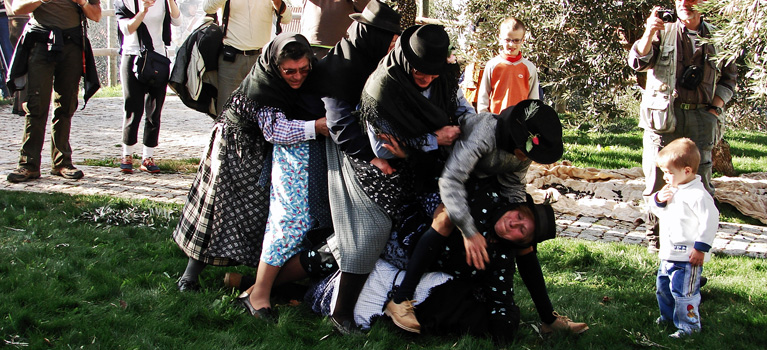

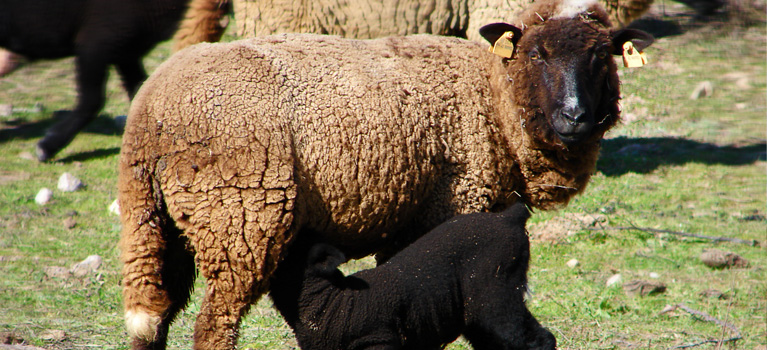
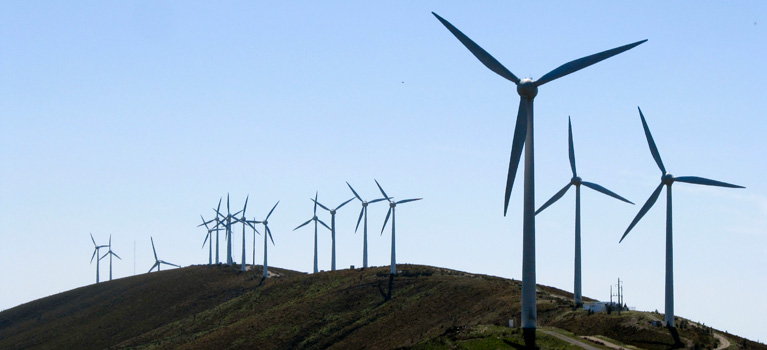
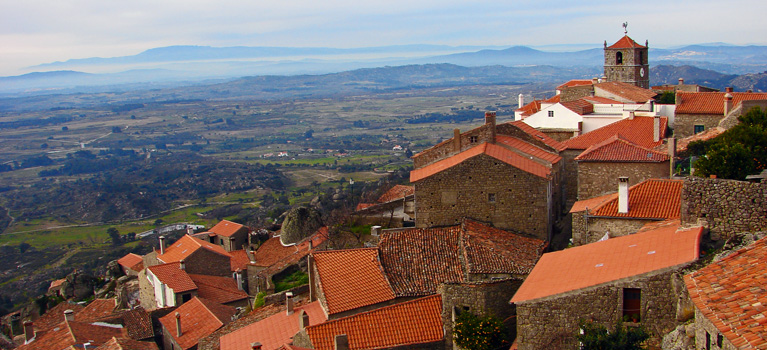
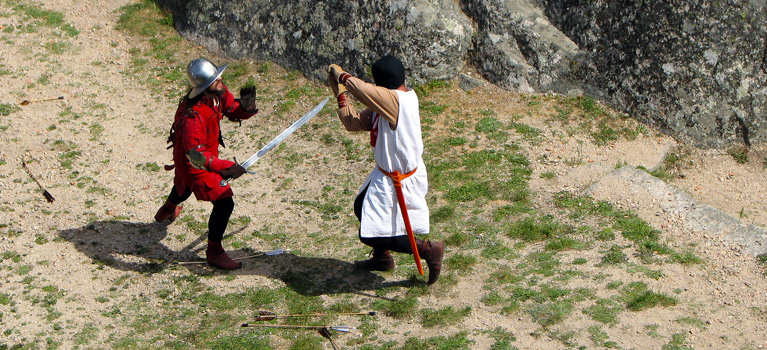
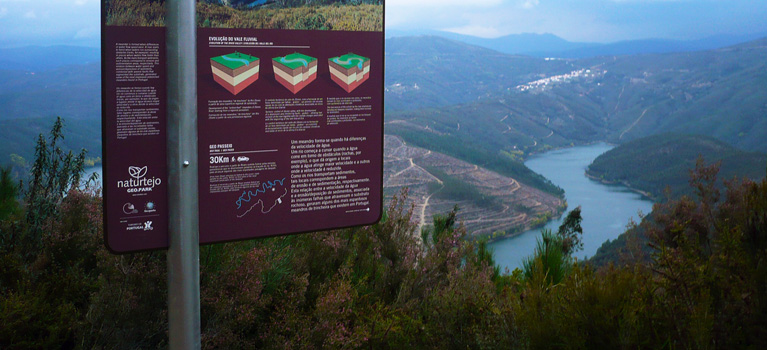

Naturtejo Geopark has a vast and rich Geological Heritage, with more than 170 geosites, places of recognized geological interest, from which we highlight 16 geomonuments, which illustrate the main stages of geological history of the last 600 million years in the region..
Where to find the geomonuments?: map
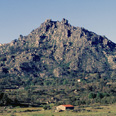
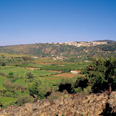
Tejo Internacional Natural Park
Special Protection Area for Birds of the International Tagus, Erges and Ponsul - (Protected Area, Natura Network and IBA)
Castelo Branco/Idanha-a-Nova /Vila Velha de Ródão
This natural reserve, located between the Beira Baixa region and the Alentejo, is constituted by the river’s section between Portugal and Spain, with an area of 26.484 hectares. Considered to be one of the most relevant reserves in Europe, it is constituted by a great natural patrimony, characterized by its biodiversity in a wild state. This area involves the municipalities of Castelo Branco, Idanha-a-Nova and Vila Velha de Ródão.
Its vegetation includes small woods of corktrees, holmoaks and willow trees. It is distinguished as an Important Bird Area, with different species of eagles and vultures. There is also the presence of black storks and various species of mammals including otters, wild cats and red deers. Many of these are rare species, some even considered endangered.
Portas de Ródão Natural Monument – Protected Area, Natura 2000, IBA (Nisa and Vila Velha de Ródão)
Passing by Vila Velha de Ródão, this monument emerges in the landscape, giving home to most of the natural patrimony present in this region. The biodiversity here is particularly important with many specimens of fauna, avifauna and flora. In the river’s deeps rest the remains of a prehistoric complex of paintings, where it is still possible, in its margins, to observe some testimonies of the presence of ancient cultures in this area.
This monument is also home to the largest colony of griffins in Portugal, making this a privileged place for the study of these animals. Here can be observed 116 species of birds, some of them very rare. Among them we can find the black stork, vultures, eagles, the goshawk and many others.
Gardunha Mountais – Natura 2000 (Castelo Branco)
This is an elevation that spreads for about 20 km of distance and is 10 km wide with a maximum of 1227 meters of altitude. In spite of human interventions in the area, the Gardunha territory has great natural value, with the presence of various species of oaks. The presence of endogenous vegetation also stimulates the appearing of local fauna, with the presence of some important species of reptiles and other animals.
Penha Garcia Hills and Campina de Toulões – IBA (Idanha-a-Nova)
This region is integrated on the area of Idanha-a-Nova, and is characterized by its diversity of habitats which comprehend from plain stepped fields, with species of corktrees and holmoaks and areas of Mediterranean bushes, to the South, and steeped hills of quartz to the North. These hills also have the particularity of having zones of direct sunlight, turned to the south, and other zones less exposed to the sunlight, turned to the north, which originate a great diversity of habitats, with different specifications.
Portas do Vale Mourão – IBA (Vila Velha de Ródão/Proença-a-Nova)
This region comprehends the area between Proença-a-Nova and Vila Velha de Ródão, and it’s located in the Ocreza river. The landscape is still wild, painted by the quartz steeped hills, the tectonic folding and the Ocreza river. The geological landscape gives home to well preserved ecosystems, in a important breeding place for birds of prey and other animal species, like the squirrel, the otter or the badger. Archaeologically speaking, there’s also an old roman gold mine and the legendary underground galleries of unknown origin along the right banks of the Ocreza river. To enjoy the beauty of this region we suggest you try the pedestrian route PR 2 – “The Secrets of the Almourão Valley”.
S. Mamede Site and Nisa/Lage de Prata site – Natura 2000 (Nisa)
These are part of the granitic places of the Alto Alentejo area, characterized by the presence of huge blocks of granite. There’s also the presence of oaktrees, corktrees and even holmoaks. Among the fauna exemplars we can find in the S. Mamede area water-lizards, mice or otters. S. Mamede is also an historic area of the Iberian lynx.

Geopark Naturtejo © 2025 All rights reserved
Créditos Fotográficos:
Pedro Martins
Stock Images of the Geopark Naturtejo
Developed by citricweb.pt